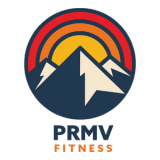As a functional fitness coach and mobility expert, my central aim is helping people maximize their physical potential. But true optimization spans body, mind and spirit. That's why I recently reviewed an enlightening interview with pioneering longevity physician Dr. Peter Attia.
In this post, I'll break down Dr. Attia's insights on exercising smarter, nurturing emotional health, and embracing our evolutionary roots. Read on to learn how to unlock your body's full capabilities and lead a purposeful life.
Exercise: The Closest We Have to a Longevity Miracle Drug
As a strength and conditioning specialist, I'm laser-focused on exercise programming. So what really captured my attention was the irrefutable data Dr. Attia shared demonstrating exercise's unmatched impact.
Specifically, Dr. Attia revealed those in the top few percent for strength have just a third the mortality risk compared to weaker individuals. Similarly, people with low cardiovascular fitness are a shocking five times more likely to die versus highly fit peers.
These statistics prove what I witness daily in the gym - nothing comes close to intelligently designed, progressive exercise for enhancing longevity.
Of course, many clients tell me they struggle to find time to exercise. But here's the kicker - Dr. Attia explained going from zero activity to a mere 90 minutes per week still reduces mortality by 15%!
That's just 12 minutes a day, something we all can manage. Remember this fact when motivation is lacking.
As a coach, I don't prescribe fixed durations. I always ask clients "What CAN you do?" Then I help design a regimen tailored to their unique abilities and lifestyle. With the right program, small amounts of exercise deliver transformative results.
But exactly what type of exercise is best? Let's dig deeper into optimizing your workouts for maximum longevity payoff.
Prioritize Strength and Cardiovascular Fitness
Not all exercise is created equal when it comes to enhancing healthspan. You want to focus on activities that improve musculoskeletal strength and cardiovascular endurance.
Why? Because as Dr. Attia revealed, weak strength and aerobic fitness independently predict sky-high mortality rates later in life.
For strength training, that means heavy compound lifts like squats, deadlifts, presses, and loaded carries. These tax your muscles in a way that no cardio machine ever could.
And don't just aim for higher rep counts. The real gains in intestinal fortitude come from progressively increasing load and intensity over time. Adding a few pounds each week will transform your strength far more than mindless reps.
Now, does that mean you should abandon cardio? Not at all. You want to maintain a robust cardiovascular system through regular high-intensity interval training (HIIT) and Zone 2 training.
For HIIT, aim for brief bursts of all-out effort followed by recovery, like 30 seconds on/90 seconds off. This maximizes cardiac output and efficiency better than slow endurance exercise.
For Zone 2 training, aim for 3-4 days per week at 60-90 minutes per session.
Of course, exactly how you structure your strength, HIIT, and Zone 2 sessions depends on your current ability and goals. I design fully customized programs for every client.
But always make strength and cardio your exercise priorities. These deliver an unbeatable longevity return on time invested.
Don't Overlook Mobility and Stability
Unfortunately, many exercise programs focus solely on strength and cardio. But to unlock your athletic potential, functional mobility and stability are equally fundamental.
Mobility refers to your ability to move joints fluidly through a full range of motion. Hip rotations, thoracic extensions, and ankle dorsiflexion are common movement limitations.
Targeting mobility optimizes posture, coordination, and injury resilience. I prescribe specific mobilization exercises like banded distractions and loaded stretches to restore free movement.
Stability is the capacity to transfer force efficiently without energy leakage or compensation. Weak glutes and core commonly undermine stability, manifesting as back pain or knee issues.
I implement focused drills like pallof presses, suitcase carries, and single-leg Romanian deadlifts to ingrain rock-solid stabilization throughout the body.
Neglecting mobility and stability inevitably leads to pain, dysfunction and accelerated aging. Make these foundational capacities lifelong training priorities.
Adopt an Ancestral Lens to Exercise and Life
During the interview, Dr. Attia made a profound point about sleep. He noted that no species has evolved away from sleeping eight hours daily despite the immense vulnerability it creates.
This evolutionary perspective blew me away. Clearly sleep provides an indispensable biological benefit since risks of forgoing it outweigh any advantages.
As a functional coach, I'm always considering how we can extract lessons from our primal hunter-gatherer origins. Physical exertion, intermittency, community, fresh air - these ancestral staples nourish us but are neglected today.
My intensive exercise programs incorporate these elements. And I encourage clients to examine daily routines through an evolutionary lens. How can we recreate our innate human experience even amidst modernity?
Adopting an ancestral outlook also helps correct flawed assumptions about exercise. For instance, many worry exercise will make them hungrier and fatter.
But our ancestors never had this issue despite constant physical exertion. In fact, exercise improves insulin sensitivity and appetite signaling. Your body knows how to auto-regulate - if you let it.
An evolutionary paradigm reminds us what supports, not strains, our health. Keep this mindset when designing exercise and lifestyle routines.
Nourish Yourself Through Exercise
Many individuals, especially women, worry exercise will increase their appetite making weight loss impossible.
But as Dr. Attia explained, exercise actually enhances insulin sensitivity and responsiveness to hunger and satiety signals. So you gain greater intuitive control over your nutrition.
This is exactly what I see - clients becoming more attuned to what foods and portion sizes optimize their energy and recovery. Exercise resensitizes your body to what it needs.
In fact, I always tell clients: don't exercise to burn calories. Do it to make your body work better at a foundational level. When you train for performance, good health naturally follows.
So don't let misconceptions about appetite stop you from exercising consistently. You don't need marathon training sessions. Start with what you can manage and let your body relearn how to best fuel itself.
How To Time Meals Around Exercise for Maximum Metabolic Benefits
Exercising while fasted, such as first thing in the morning before breakfast, enhances fat oxidation during the workout.
However, you'll recover faster eating a light meal about 60-90 minutes pre-workout. Include easily digested carbs like a banana and some protein.
Post-workout, prioritize a mix of fast-acting carbs and protein. This optimally replenishes glycogen stores and stimulates muscle repair. Chocolate milk is a simple and effective option.
Before bed, avoid just carbs alone. The pairing of carbs and protein controls morning blood sugar and reduces catabolism overnight.
Strategically fueling exercise primes your body to utilize nutrients efficiently. This amplifies the metabolic benefits of training.
Don't Fear Fat When Trying to Lose Fat
Many clients seeking fat loss obsess over avoiding dietary fat. But fat fuels high intensity exercise which builds calorie-burning muscle.
Aim for around 30% of calories from healthy fats like olive oil, nuts, seeds, avocado and fatty fish. These provide energy and important vitamins.
Meanwhile, cut sugar, refined grains and processed carbs which spike insulin and get stored as body fat.
Remember, your body preferentially burns fat when exercising, not the fat you eat. So don't deprive yourself of nourishing fats that support training performance.
The Critical Role of Protein for Exercise Recovery and Weight Maintenance
Out of the three macronutrients, protein is the priority for active individuals. Aim for 1-1.6 grams per kg of bodyweight daily.
Spread intake throughout the day for optimal synthesis into new muscle tissue. Have 20-40 grams per meal.
A high quality whey protein is easily digestible for fast delivery to muscles post-workout.
When cutting calories, increasing protein prevents lean mass loss. It also provides superior satiety helping control hunger.
Maximizing daily protein ensures your hard training translates to lean muscle gains instead of simply weight loss. Don't miss this crucial workout nutrition strategy.
Prioritize Holistic Health: The Emotional and Spiritual Dimensions
Achieving longevity isn't just about your physical health - it's also about fulfillment and purpose. During the interview, Dr. Attia courageously opened up about his past struggles with workaholism, anger issues, and marital problems.
At his lowest point, Dr. Attia recognized he needed to reset his priorities and focus on his emotional health, which he called the "great equalizer".
What allowed him to overcome those challenges? Two stints of intensive therapy to confront past trauma. By healing deep-rooted wounds, Dr. Attia found a sense of inner peace.
Dr. Attia's journey shows that true health spans across body, mind and spirit. It requires self-awareness, vulnerability and, above all, a commitment to grow. His story inspires me to continually explore my own path toward wholeness and wellbeing.
As a coach, I now recognize emotional and spiritual health are inseparable from physical optimization. My role is guiding clients to greater self-understanding and purpose, not just a six pack.
Below are ways I've successfully incorporated emotional and spiritual growth into training programs:
Foster Lasting Behavior Change Through Intrinsic Motivation
Clients need emotional readiness to adopt lifestyle changes. Externally imposed rules inevitably fail long-term.
That's why I spend extensive time unearthing clients' core motivations and aligning programs to deeply held values. This generates lasting intrinsic drive.
By connecting training to purpose, clients gain the resolve to persist through obstacles. Meaning powers change.
Arm Clients With Mental Fitness Tools
Willpower and discipline are finite mental resources. I teach practices like mindfulness, visualization, and reframing self-talk to expand mental bandwidth.
This equips clients to manage stress, boredom, and discomfort - inevitable training challenges. Mental fitness fosters consistency.
Promote Holistic Health Habits
Health outcomes depend vastly more on daily habits than sporadic training. I help clients build holistic routines - not just around exercise, but sleep, nutrition, leisure, connection, and time in nature.
Small actions compound dramatically over years. Consistency in ALL facets of lifestyle is the ultimate determinant of wellbeing.
Cultivate Community and Accountability
We thrive when united toward something bigger than ourselves. I facilitate community building amongst clients for camaraderie, social support, and accountability.
I also involve family members to align home environments with training goals. We all need a team behind us.
Achieving lofty goals requires training the mind and spirit too. I now consider emotional, social and spiritual development core components of health coaching.
Choose Vitality: Commit To Your Healthspan Future Today
The future elderly version of yourself is counting on you. Will you be vital, energetic and independent into your 80s and 90s? Or increasingly frail, lethargic and dependent?
The choice is yours. But it must be made NOW before decline sets in. Every training session, every meal, every lifestyle decision shapes your human potential for years to come.
Choose wisely. Choose health. Choose life.
What's one small step you can take today to invest in your future vitality? Share your commitment below!

